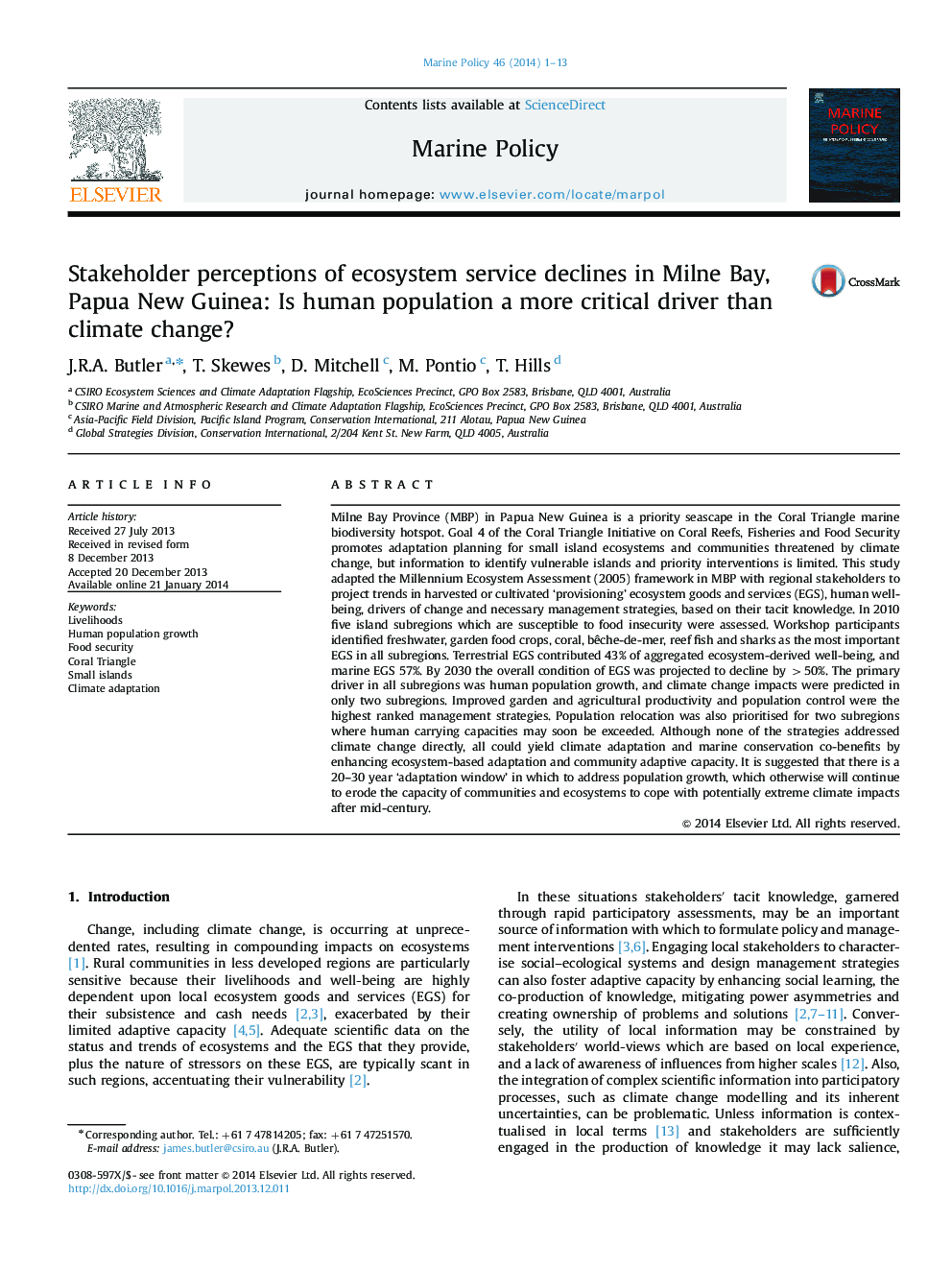| کد مقاله | کد نشریه | سال انتشار | مقاله انگلیسی | نسخه تمام متن |
|---|---|---|---|---|
| 1060400 | 1485533 | 2014 | 13 صفحه PDF | دانلود رایگان |
• The Coral Triangle Initiative prioritises climate adaptation for small islands.
• A participatory method was trialled to identify vulnerable islands in Milne Bay PNG.
• Condition of all ecosystem services was predicted to decline by >50% by 2030.
• Climate change was a less critical driver of change than human population growth.
• Controlling population will have co-benefits for adaptation and marine conservation.
Milne Bay Province (MBP) in Papua New Guinea is a priority seascape in the Coral Triangle marine biodiversity hotspot. Goal 4 of the Coral Triangle Initiative on Coral Reefs, Fisheries and Food Security promotes adaptation planning for small island ecosystems and communities threatened by climate change, but information to identify vulnerable islands and priority interventions is limited. This study adapted the Millennium Ecosystem Assessment (2005) framework in MBP with regional stakeholders to project trends in harvested or cultivated ‘provisioning’ ecosystem goods and services (EGS), human well-being, drivers of change and necessary management strategies, based on their tacit knowledge. In 2010 five island subregions which are susceptible to food insecurity were assessed. Workshop participants identified freshwater, garden food crops, coral, bêche-de-mer, reef fish and sharks as the most important EGS in all subregions. Terrestrial EGS contributed 43% of aggregated ecosystem-derived well-being, and marine EGS 57%. By 2030 the overall condition of EGS was projected to decline by >50%. The primary driver in all subregions was human population growth, and climate change impacts were predicted in only two subregions. Improved garden and agricultural productivity and population control were the highest ranked management strategies. Population relocation was also prioritised for two subregions where human carrying capacities may soon be exceeded. Although none of the strategies addressed climate change directly, all could yield climate adaptation and marine conservation co-benefits by enhancing ecosystem-based adaptation and community adaptive capacity. It is suggested that there is a 20–30 year ‘adaptation window’ in which to address population growth, which otherwise will continue to erode the capacity of communities and ecosystems to cope with potentially extreme climate impacts after mid-century.
Journal: Marine Policy - Volume 46, May 2014, Pages 1–13
